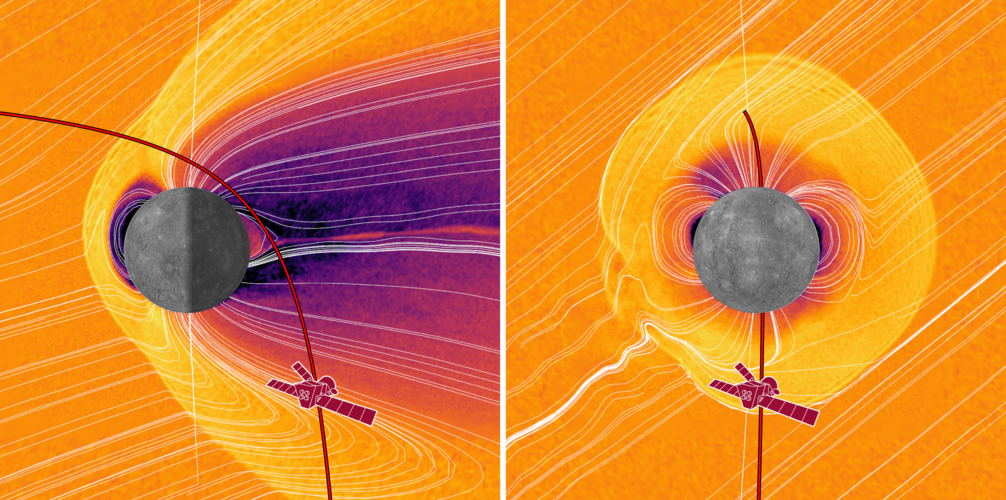Key views of Mercury's shadowy north pole
Excitingly, BepiColombo's route takes it right over Mercury's north pole. This allows the spacecraft to peer down into craters whose insides never get touched by the Sun. Despite temperatures reaching 450 °C on Mercury's sunlit surface, the polar ‘permanent shadow regions’ are literally ice-cold.
Data gathered by instruments on NASA’s Messenger spacecraft between 2011 and 2015, plus radar observations from Earth, have provided strong evidence for water ice in some of these craters. Whether there is really water ice on hot Mercury is one of the top five mysteries that BepiColombo has set out to solve.
During this flyby, BepiColombo's monitoring camera 1 (M-CAM 1) should get some nice views of the permanently shadowed Prokofiev, Kandinsky and Tolkien craters.
Other exciting features that BepiColombo's monitoring cameras will see are the deep Stieglitz and Gaudí craters, Mercury's largest impact crater (the more than 1500 km-wide Caloris Basin), and the vast northern plains known as Borealis Planitia.
Below is a simulation of M-CAM 1's views of Mercury during the flyby, using a digital topography model prepared by the Messenger mission team. There is a gap in this model around the poles. BepiColombo's upcoming flyby views, and the mission's polar orbits around Mercury from 2026, will greatly improve the coverage in these regions.



